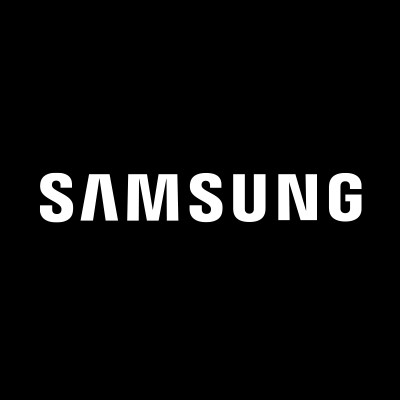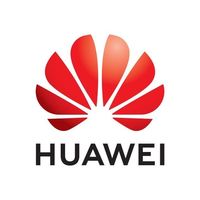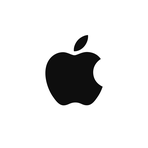Huawei's Bold Move: The Tri-Fold Smartphone Challenge
September 10, 2024, 11:07 pm

Location: United States, California, San Francisco
Employees: 10001+
Founded date: 1938
Total raised: $6.4B
In the fast-paced world of technology, innovation is the name of the game. On September 10, 2024, Huawei Technologies made a splash with the launch of its Mate XT, a tri-fold smartphone priced at a staggering $2,800. This move comes just hours after Apple unveiled its latest iPhone, setting the stage for a fierce competition between two tech giants.
Huawei's Mate XT is not just another smartphone; it’s a statement. With the ability to fold three ways, it resembles an accordion, offering users a unique experience. The launch took place in Shenzhen, a city known for its tech prowess. Here, Huawei aims to reclaim its position in the smartphone market, especially in China, where it has seen a resurgence.
The Mate XT has already garnered over 4 million pre-orders, a testament to its appeal. However, the foldable smartphone market is still a niche, representing only 1.3% of the total smartphone shipments globally. In the second quarter of 2024, 292.2 million smartphones were shipped, according to IDC. Despite this, Huawei leads the foldable segment with a 27.5% market share, surpassing Samsung, which holds 16.4%.
In China, Huawei's dominance is even more pronounced. The company commands a 42% share of the foldable market, outpacing competitors like Vivo and Honor. Meanwhile, Apple’s position has slipped from third to sixth place in the Chinese market, a significant decline that reflects changing consumer preferences.
The Mate XT is equipped with cutting-edge features, including an AI assistant capable of text summarization, translation, and photo editing. These enhancements are powered by Huawei's in-house Kylin chips, showcasing the company's commitment to innovation despite U.S. sanctions that have limited its access to global chip supplies.
The timing of the Mate XT's launch is strategic. Apple’s iPhone 16, which also boasts AI capabilities, has faced criticism in China for its lack of localized features. Some consumers have questioned the value of purchasing an iPhone when it lacks robust AI functionalities. This sentiment is echoed on social media platforms, where users express their frustrations.
Huawei's return to the high-end smartphone market began last year with the Mate 60 Pro, a device that surprised analysts and U.S. officials alike. This resurgence has been fueled by strong sales and a growing consumer base that favors domestic brands over foreign ones. The Mate XT is a continuation of this trend, positioning Huawei as a formidable competitor to Apple.
However, the high price tag of the Mate XT raises questions about its market impact. Analysts suggest that while the phone symbolizes Huawei's technological prowess, it may not significantly boost sales due to production constraints and its premium price. The Mate XT is more than twice the starting price of the iPhone 16 Pro Max, making it a luxury item rather than a mass-market device.
The foldable smartphone market is growing, with a 57% year-on-year increase in shipments. Yet, it remains a small fraction of the overall smartphone landscape. Huawei's success in this segment highlights its ability to innovate and adapt, even in the face of adversity.
The competition between Huawei and Apple is not just about market share; it’s a battle for the hearts and minds of consumers. As Huawei continues to push the envelope with its technology, Apple must respond. The stakes are high, and the outcome remains uncertain.
In conclusion, Huawei's launch of the Mate XT is a bold move in a crowded market. It reflects the company's resilience and ambition to reclaim its position as a leader in the smartphone industry. As consumers weigh their options, the rivalry between Huawei and Apple will undoubtedly shape the future of mobile technology. The Mate XT may be a symbol of Huawei's capabilities, but its true impact will be measured in sales and consumer loyalty. The tech world is watching closely, and the next chapter in this saga is just beginning.
Huawei's Mate XT is not just another smartphone; it’s a statement. With the ability to fold three ways, it resembles an accordion, offering users a unique experience. The launch took place in Shenzhen, a city known for its tech prowess. Here, Huawei aims to reclaim its position in the smartphone market, especially in China, where it has seen a resurgence.
The Mate XT has already garnered over 4 million pre-orders, a testament to its appeal. However, the foldable smartphone market is still a niche, representing only 1.3% of the total smartphone shipments globally. In the second quarter of 2024, 292.2 million smartphones were shipped, according to IDC. Despite this, Huawei leads the foldable segment with a 27.5% market share, surpassing Samsung, which holds 16.4%.
In China, Huawei's dominance is even more pronounced. The company commands a 42% share of the foldable market, outpacing competitors like Vivo and Honor. Meanwhile, Apple’s position has slipped from third to sixth place in the Chinese market, a significant decline that reflects changing consumer preferences.
The Mate XT is equipped with cutting-edge features, including an AI assistant capable of text summarization, translation, and photo editing. These enhancements are powered by Huawei's in-house Kylin chips, showcasing the company's commitment to innovation despite U.S. sanctions that have limited its access to global chip supplies.
The timing of the Mate XT's launch is strategic. Apple’s iPhone 16, which also boasts AI capabilities, has faced criticism in China for its lack of localized features. Some consumers have questioned the value of purchasing an iPhone when it lacks robust AI functionalities. This sentiment is echoed on social media platforms, where users express their frustrations.
Huawei's return to the high-end smartphone market began last year with the Mate 60 Pro, a device that surprised analysts and U.S. officials alike. This resurgence has been fueled by strong sales and a growing consumer base that favors domestic brands over foreign ones. The Mate XT is a continuation of this trend, positioning Huawei as a formidable competitor to Apple.
However, the high price tag of the Mate XT raises questions about its market impact. Analysts suggest that while the phone symbolizes Huawei's technological prowess, it may not significantly boost sales due to production constraints and its premium price. The Mate XT is more than twice the starting price of the iPhone 16 Pro Max, making it a luxury item rather than a mass-market device.
The foldable smartphone market is growing, with a 57% year-on-year increase in shipments. Yet, it remains a small fraction of the overall smartphone landscape. Huawei's success in this segment highlights its ability to innovate and adapt, even in the face of adversity.
The competition between Huawei and Apple is not just about market share; it’s a battle for the hearts and minds of consumers. As Huawei continues to push the envelope with its technology, Apple must respond. The stakes are high, and the outcome remains uncertain.
In conclusion, Huawei's launch of the Mate XT is a bold move in a crowded market. It reflects the company's resilience and ambition to reclaim its position as a leader in the smartphone industry. As consumers weigh their options, the rivalry between Huawei and Apple will undoubtedly shape the future of mobile technology. The Mate XT may be a symbol of Huawei's capabilities, but its true impact will be measured in sales and consumer loyalty. The tech world is watching closely, and the next chapter in this saga is just beginning.


